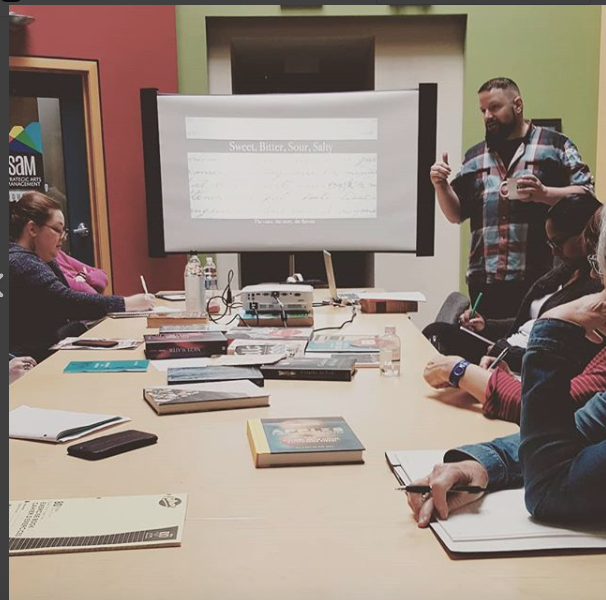Begat, Bequeath, and Begin.
A journal by Augustin Comeau, detailing his honeymoon to New York City in 1939.
It was often half-jokingly referred to as “old stuff,” with the value of said “stuff” to be determined by the day, the mention, and the context in which said stuff found itself being discussed.
The “old stuff” was boxes of papers my mother had inherited from her father, reams upon reams of loose papers, random notebooks, and the occasional legal document that had (probably) lost its legal standing, or was obsolete.
It was a “later” project for my mom, as in she would look at it later, when she retired. Or when she had time when she retired. But that “later” eventually became a “now” and the “old stuff” was no longer just stuff to be joked about. It was little pieces of family history.
Yes, there were interesting family tidbits, like the notebook her father took with him when he went to New York City for his honeymoon. He wrote about the first time he visited a building that had this new fangled thing called air conditioning. And there were boxes upon boxes of old photos that left my mother saying, “I wish I had gone through these with my father.” People left unknown, events undescribed.
One of the many unnamed and unknown individuals photographed and found amongst the “old stuff.” However, do note the copious amount of sweets, cakes, and whatnot, eaten at many traditional Acadian weddings at the turn of the century.
Many of us have little pieces of history in our families - heirlooms, anecdotes and legends, and the occasional family bible. But the further my mother began to dig into these family objects, she began to recognize that her definition of family could not be contained by her immediate family.
No, this stuff was much bigger than that. Those legal documents -that left her and my father wondering why they had been kept- turned out to be papers that spoke of the founding of the village where over one hundred years later she would be raised. Amongst a whole lot of other people.
And then there was the notebook.
Unassuming, coverless, a couple inches wide and only few inches longer, its first entry was dated the fourth of August, 1856. The ink of the entry underneath had faded, but snippets of it were still readable under the right light - or the right scanner. My mother had seen it around, but hadn’t paid close attention to it at the time, thinking she would get back to it. And when she did get back to it and started reading it, she realized what it was. A journal. A journal of a trip, taken over 160 years ago, from the tiny village of La Butte, to a series of acadian communities throughout the Canadian maritimes. Places like Memramcook, Tignish, Miscouche.
Its author, Justinien (son of Old Jos, son of Justinien), was travelling to where his ancestors, and notably his grandfather, had lived - and possibly visited - during the expulsion of the Acadians in the mid 1700’s. It was a retracing of steps. Whether it was intentional or not was not written in the journal, as it read more like an itinerary, with names and dates and places. But while it didn’t speak of Justinien (the younger’s) emotional life, it did speak of what was important to a man like him: visiting churches, going to mass, making sure to name the people who put him up, all alongside of occasional doodles and a few religious texts interspersed throughout. It was personal to him, in his fashion, and in and of his time.
I posted about the journal on Facebook and on Twitter and was surprised at the reaction it got, from Acadians and non-Acadians alike. I was asked to share it, but it was not mine to share, as I wanted to make sure it was alright with my mother as it was her discovery, and I didn’t want to take the credit away from her, or those who helped transcribe it, let alone those who were interested in sharing it with various genealogical and historical groups. With their support, it was decided that, I, a descendent of Justinien (via his son Étienne, his grandson Augustin, and his great-granddaughter Jeanne), should share and present it, here, on this website.
You can see scans of the journal here, with notes both in english and en français here. And you can also read the journal entries, here.
Many thanks to my mother, who gave me permission to share this (and her) story, as well as her transcribers, and her friends in archiving.
















